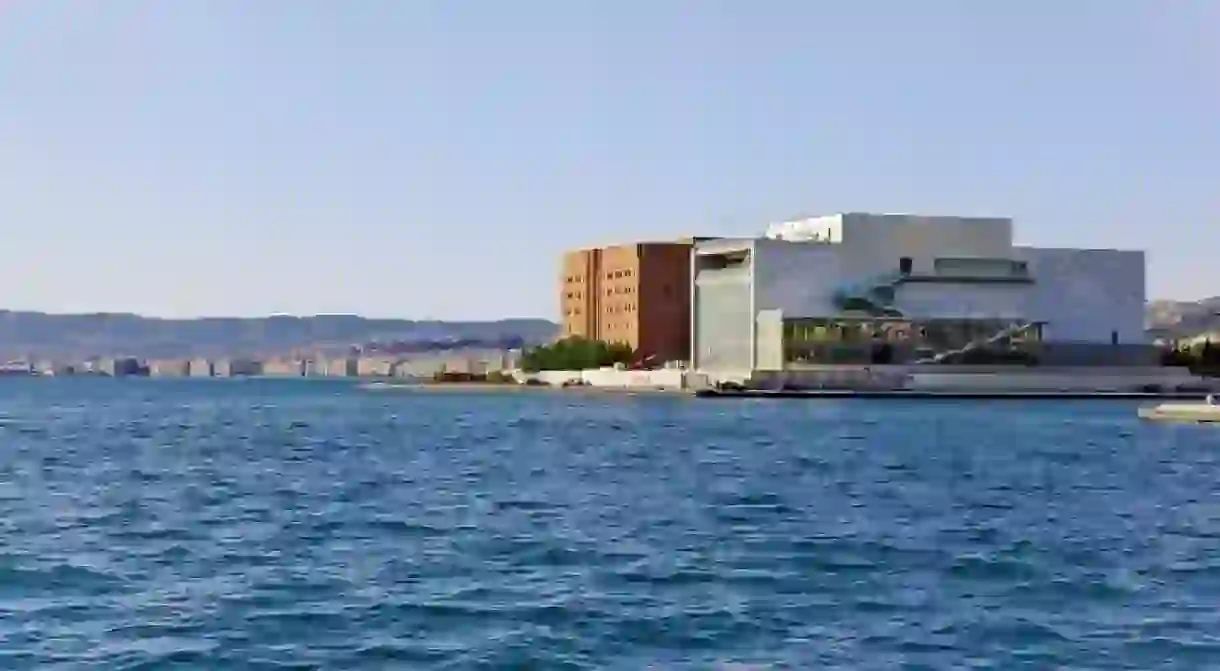7 Architectural Gems to See in Thessaloniki

Thessaloniki boasts a rich history which is represented by its many landmarks and monuments. A stroll around the second city of Greece will give you a glimpse into its past. As such, Thessaloniki is home to a series of stunning and impressive buildings of different architectural styles, adorning the city with a touch of grandeur. Here is a tour of some of the architectural gems in Thessaloniki.
M2 Building of the Thessaloniki Concert Hall
Building, Concert Hall

Located on Maria Callas Street along the waterfront, the Thessaloniki Concert Hall features two main buildings. The M2 building, designed in 2004 by Japanese architect Arata Isozaki and completed in 2010, boasts modern architecture. It includes strong geometrical lines, glass surfaces and elements of steel. Airy and bright, the building has a strong aesthetic and advanced technology; it is an impressive structure to visit if you are an architecture enthusiast. Bonus tip: Don’t forget to check out the view from the top-floor restaurant.
The Ottoman Bank
Building
Housing the State Conservatory of Thessaloniki, the building of the Ottoman Bank is another excellent example of exquisite architecture. Located in the Frangomachalas district and built around the 1850s, the building served as a bank from its opening in 1864 until 1903 when a bomb destroyed it. Reconstruction works started soon after, and in 1904, a new building was erected where the former structure stood. Today it boasts a French-inspired eclectic style, featuring strong neoclassical and neo-baroque elements.
The Old Customs House
Building

Standing proudly in the Thessaloniki Port, the Old Customs House was built in 1910 by Eli Modiano, an engineer who studied in France. The façade measures 200 meters (656 feet) long and 25 meters (82 feet) wide, and the structure includes several sections, as well as many neo-Renaissance elements and arched openings, traits common in French architecture. The building connects the port’s two piers and is now used as a passenger terminal.
Villa Bianca
Building

Located off Vasilissis Olgas Street, the Villa Bianca—also called Casa Bianca or Villa Fernandez after its first owners—was built between 1911 and 1913 by Pietro Arrigoni. The Nazis confiscated the house during the occupation of Greece; later on, the municipality of Thessaloniki purchased it. Housing the Municipal Art Gallery, the villa is also used to host cultural events every now and then. The house is a perfect example of “tower-like” architecture and features eclectic, classical and Renaissance elements, while Art Nouveau details are also present.
The Government House
Building

Constructed in 1891 by Italian architect Vitaliano Poselli, the Government House, also called Konak or Dioikitirio (dikitirio), stands in the heart of the city, by Agiou Dimitriou Street. Now home to the Ministry of Macedonia and Thrace, the Konak used to be the residence of the governor of the city and the headquarters of the Ottoman authorities during the Ottoman rule. Though eclecticism is the main architectural style, the top floor, added in 1955, bears neoclassical features.
Bey Hamam
Building

Located on Egnatia Street, Bey Hamam, also known as the Baths of Paradise, is a Turkish bathhouse built in 1444 by Sultan Murad II. These were the first Ottoman baths in Thessaloniki and the main traditional hamam still standing today. A true vestige of Ottoman presence in Greece’s second city, Bey Hamam was used up until 1968. After the 1978 earthquake, which destroyed a great deal of the city, the baths underwent restoration, and today, it hosts cultural events.
Château Mon Bonheur
Building

A building with a romantic name, Château Mon Bonheur (The Tower of Eftichia) was built in 1890. Designed by French architect Frederic Charnot, the building was commissioned by Dimitris Tsakirdeki to be a gift to his wife, Eftichia. This is an eclectic structure, with medieval elements such as the Venetian ramparts and red-brick façades. While the main building saw a few additions over the years, it was later restored to its original form, making it one of the most impressive and charming buildings in the history of Thessaloniki.













